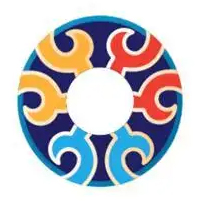Jingtai Blue: The Most Splendid Traditional Handicraft in Chinese History.
Cloisonne is the most brilliant craftsmanship in Chinese history and is known as the most beautiful scenery in the world. This kind of handicraft leaves an unforgettable impression on people. Some people say, 'Without Cloisonne, it would be in vain to collect all the treasures in the world.' However, why is Cloisonne so precious? Why is the quantity of finished products so rare?
High cost: Jewelry-grade materials shine through time.
The raw materials of Cloisonne include rare glazes such as natural agate, lapis lazuli, turquoise, ruby, and sapphire. The price of one liter of these natural minerals exceeds ten thousand yuan, so the cost of making Cloisonne is very high.
Compared with cheap industrial pigments, glazes made from natural minerals are durable and not darkened by sunlight. It is because of this that Cloisonne made with glazes made from natural minerals can shine brightly and last for a long time. This is also one of the reasons why Cloisonne is so precious.
Difficult craftsmanship: Only with enough patience and skill can one do well in the making of Cloisonne.
A complete cloisonné requires 108 processes, each of which needs to be done by hand, pursuing perfection and beauty. These processes include making the base, wire inlay, blue dotting, blue firing, polishing, and gold plating. Even in modern times, there is no machine that can replace these processes, which makes cloisonné rare and precious.
In the production of cloisonné, the first step is to cut and weld high-quality copper sheets to form the base copper embryo. Then, flexible copper wires are cut into small sections and various shapes and patterns are concaved through pinching, breaking, bending, and folding.
Next, copper wires are used to outline patterns with Chinese aesthetics, such as birds, peonies, or other decorations. It takes thousands or tens of thousands of wire segments to complete a piece of cloisonné. Then, each layer of enamel needs to be applied and fired until it is level with the copper wires. Finally, multiple polishing with diamond sand and other abrasive stones is done to make the cloisonné more brilliant.
High threshold: high production cost, few skilled craftsmen
The craftsmanship level required for making cloisonne is extremely high, with a very high threshold. To become a qualified cloisonne maker, it takes at least more than ten years of dedicated practice. According to statistics, there are millions of practitioners nationwide, but there are only five true grand masters of cloisonne.
Historically, cloisonne was mostly used by the royal family, and the quantity produced and circulated was limited. The modern craftsmanship of cloisonne is extremely complex and challenging, with high requirements for materials. These factors limit the widespread dissemination of cloisonne. Therefore, the high cost and limited availability are the reasons why true cloisonne is still heard of but rarely seen.

